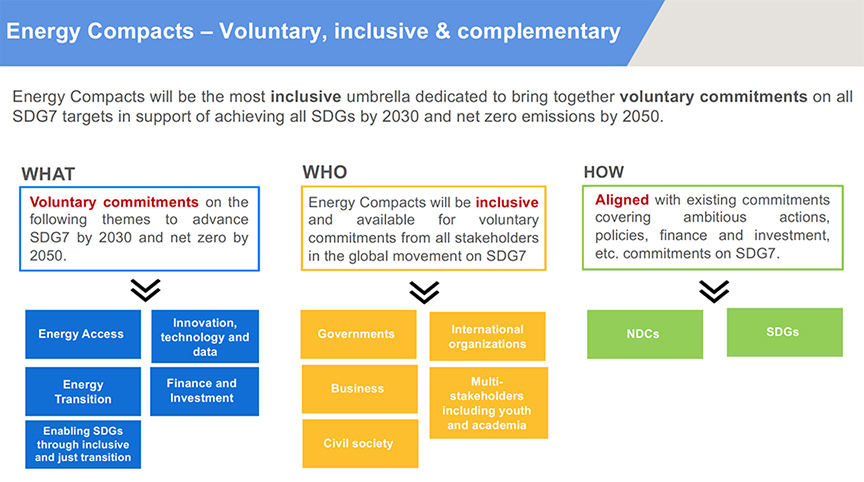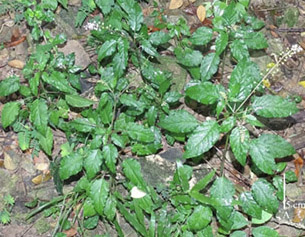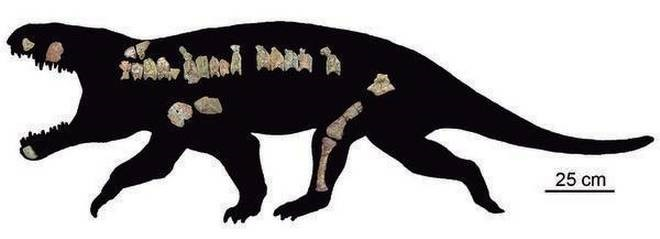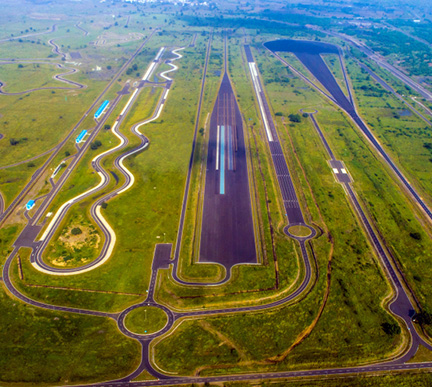Social Justice
Supreme Court’s Ruling on ONORC System for Migrant Workers
Why in News
Recently, the Supreme Court directed all states and Union Territories (UT) to implement the One Nation, One Ration Card (ONORC) system by 31st July 2021.
- The scheme allows migrant labourers covered under the National Food Security Act (NFSA) to access food at any fair price shop with his or her ration card in any part of the country.
Key Points
- Right to Food:
- The fundamental right to life under Article 21 of the Constitution may be interpreted to include the right to live with human dignity, having the right to food and other basic necessities.
- Importance of Migrants:
- There are around 38 crore workers engaged in the unorganized sectors (National Statistics Office (NSO) data of 2017-2018).
- These unorganized workers did not have any permanent source of employment and have engaged themselves in small time vocations and occupations at various places away from their native places.
- Contributions of these labourers towards different projects, industries, make considerable additions in the economic development of the country.
- Database:
- Criticized the Labour Ministry for not completing the work of the Rs 45.39-crore National Database for Unorganised Workers (NDUW) portal to register and identify migrant workers.
- The Court had ordered the Ministry to finalise the NDUW module way back in 2018.
- Directed the States/UTs to register establishments and license contractors under the Inter-State Migrant Workmen (Regulation of Employment and Conditions of Service) Act, 1979 and ensure that they provide the authorities complete details of the workers employed with them.
- Criticized the Labour Ministry for not completing the work of the Rs 45.39-crore National Database for Unorganised Workers (NDUW) portal to register and identify migrant workers.
- Redetermination of Beneficiaries under NFSA:
- Directed the Centre “to undertake exercise under Section 9 of the National Food Security Act, 2013” to re-determine the total number of persons to be covered under Rural and Urban areas of the State.
ONORC System
- Background:
- Under the National Food Security Act (NFSA), 2013, about 81 crore people are entitled to buy subsidised food grains - rice at Rs 3/kg, wheat at Rs 2/kg, and coarse grains at Re 1/kg – from designated fair price shops.
- However, NFSA beneficiaries were not able to access their PDS (Public Distribution System) benefits outside the jurisdiction of the specific fair price shop to which they have been assigned.
- By introducing ONORC, the idea was to reform the PDS, which has been historically marred by inefficiency and leakages.
- Launch:
- ONORC was launched in August, 2019.
- Aim:
- The ONORC scheme is aimed at enabling migrant workers and their family members to buy subsidised ration from any fair price shop anywhere in the country under the NFSA.
- To promote this reform in the PDS, the government has provided incentives to states and also set a precondition for additional borrowing by states during the Covid-19 pandemic last year.
- Technology Used:
- ONORC is based on technology that involves details of beneficiaries’ ration card, Aadhaar number, and electronic Points of Sale (ePoS). The system identifies a beneficiary through biometric authentication on ePoS devices at fair price shops.
- The system runs with the support of two portals - Integrated Management of Public Distribution System (IM-PDS) and Annavitran.
- While the Annavitaran portal maintains a record of intra-state transactions - inter-district and intra-district - the IM-PDS portal records the inter-state transactions.
- ONORC Coverage:
- Till date, 32 states and UTs have joined the ONORC, covering about 69 crore NFSA beneficiaries.
- Four states are yet to join the scheme - Assam, Chhattisgarh, Delhi and West Bengal.
- While inter-state ration card portability is available in 32 states, the number of such transactions is much lower than that of intra-district and inter-district transactions.
- Benefits:
- Under the ONORC, the beneficiaries from one state can get their share of rations in other states where the ration card was originally issued.
- ONORC will also give the beneficiaries the opportunity to opt for the dealer of their choice.
- It will be particularly beneficial for women and other disadvantaged groups, given how social identity (caste, class and gender) and other contextual factors (including power relations) provide a strong backdrop in accessing PDS.
- This will help achieve the target set under SDG (Sustainable development Goals) 2 (Ending hunger by 2030). Also, it will address the poor state of hunger in India, as highlighted by the Global Hunger Index, where India has been ranked 94 out of 107 countries.
Social Justice
Right to Reservation in Promotions for PwDs
Why in News
The Supreme Court of India has recently held that persons with physical disabilities have the right to reservation in promotions also.
- A disabled particular person can avail the advantage of reservation for promotion even when she or he was recruited within the common class or developed the incapacity after gaining employment.
Key Points
- About the Case:
- The case was based on a claim under the Persons with Disabilities (Equal Opportunities, Protection of Rights and Full Participation) Act, 1995.
- This Act has been replaced with the Rights of Persons with Disabilities Act 2016.
- The Kerala Administrative Tribunal rejected the plea of applicant stating that the rule of Recruitment in the State of Kerala, General Rules and other orders issued by the Government under Section 32 of the 1995 Act did not provide for any reservation in promotions.
- The Kerala High Court set aside the decision of the Kerala Administrative Tribunal.
- The case was based on a claim under the Persons with Disabilities (Equal Opportunities, Protection of Rights and Full Participation) Act, 1995.
- Importance of Judgement:
- The 1995 Act recognizes the right to reservation in promotion.
- Identification of posts for reservation as per Section 32 of the 1995 Act is a prerequisite for appointment; but appointment cannot be frustrated by refusing to identify posts.
- The absence of provision for reservation in the recruitment rules will not defeat the right of a PwD as such right flows from the legislation.
- Reservation to promotion can be given to a PwD even if the person was not originally appointed in the PwD quota.
- Further, the responsibility to provide equal opportunities to disabled persons does not end with giving them reservation at the time of recruitment.
- Legislative mandate provides for equal opportunity for career progression, including promotion.
- Thus, it would be negation of the legislative mandate if promotion is denied to PwD and such reservation is confined to the initial stage of induction in service.
- This would in fact result in stagnation of the disabled in a consequential frustration.
- Right of Persons with Disabilities Act 2016:
- It fulfills the obligations to the United National Convention on the Rights of Persons with Disabilities (UNCRPD), to which India is a signatory.
- Disability has been defined based on an evolving and dynamic concept.
- The types of disabilities have been increased from 7 to 21.
- The Act added mental illness, autism, spectrum disorder, cerebral palsy, muscular dystrophy, chronic neurological conditions, speech and language disability, thalassemia, hemophilia, sickle cell disease, multiple disabilities including deaf blindness, acid attack victims and Parkinson’s disease which were largely ignored in earlier act.
- In addition, the Government has been authorized to notify any other category of specified disability.
- It increases the quantum of reservation for people suffering from disabilities from 3% to 4% in government jobs and from 3% to 5% in higher education institutes.
- Every child with benchmark disability between the age group of 6 and 18 years shall have the right to free education.
- Government funded educational institutions as well as the government recognized institutions will have to provide inclusive education.
- Stress has been given to ensure accessibility in public buildings in a prescribed time frame along with the Accessible India Campaign.
- The Chief Commissioner for Persons with Disabilities and the State Commissioners will act as regulatory bodies and Grievance Redressal agencies, monitoring implementation of the Act.
- A separate National and State Fund will be created to provide financial support to the persons with disabilities.
- Constitutional Framework for Disabled in India:
- Article 41 of the Directive Principles of State Policy (DPSP) states that State shall make effective provision for securing right to work, to education and to public assistance in cases of unemployment, old age, sickness and disablement, within the limits of its economic capacity and development.
- State Subject: The subject of ‘relief of the disabled and unemployable’ is specified in the state list of the Seventh Schedule of the constitution.
Governance
PM Formalization of Micro Food Processing Enterprises Scheme
Why in News
The Pradhan Mantri Formalisation of Micro food processing Enterprises (PMFME) Scheme, launched under the Atmanirbhar Bharat Abhiyan, completed its one year on 29th June.
- The PMFME Scheme is currently being implemented in 35 States and Union Territories (UTs).
Key Points
- Nodal Ministry:
- Ministry of Food Processing Industries (MoFPI).
- Features:
- One District One Product (ODOP) Approach:
- The States would identify food products for districts keeping in view the existing clusters and availability of raw material.
- The ODOP could be a perishable produce based or cereal based or a food item widely produced in an area. E.g. mango, potato, pickle, millet based products, fisheries, poultry, etc.
- Other Focus Areas:
- Waste to wealth products, minor forest products and Aspirational Districts.
- Capacity building and research: Academic and research institutions under MoFPI along with State Level Technical Institutions would be provided support for training of units, product development, appropriate packaging and machinery for micro units.
- Financial Support:
- Upgradation of Individual Micro Food Processing Units: Existing individual micro food processing units desirous of upgrading their units can avail credit-linked capital subsidy at 35% of the eligible project cost with a maximum ceiling of Rs.10 lakh per unit.
- Seed Capital to SHG: Initial funding of Rs. 40,000- per Self Help Group (SHG) member would be provided for working capital and purchase of small tools.
- One District One Product (ODOP) Approach:
- Implementation: Over a period of five years from 2020-21 to 2024-25.
- Funding Details:
- It is a centrally sponsored scheme with an outlay of Rs. 10,000 crore.
- The expenditure under the scheme would be shared in 60:40 ratio between Central and State Governments, in 90:10 ratio with North Eastern and Himalayan States, 60:40 ratio with UTs with legislature and 100% by Centre for other UTs.
- Need:
- The unorganized food processing sector comprising nearly 25 lakh units contributes to 74% of employment in the food processing sector.
- The unorganised food processing sector faces a number of challenges which limit their performance and their growth. The challenges include lack of access to modern technology & equipment, training, access institutional credit, lack of basic awareness on quality control of products; and lack of branding & marketing skills etc.
- Status of Indian Food Industry:
- The Indian food and grocery market is the world’s sixth largest, with retail contributing 70% of the sales.
- The Indian food processing industry accounts for 32% of the country’s total food market, one of the largest industries in India and is ranked fifth in terms of production, consumption, export and expected growth.
- It contributes around 8.80 and 8.39% of Gross Value Added (GVA) in Manufacturing and Agriculture respectively, 13% of India’s exports and 6% of total industrial investment.
- Other Schemes Related to Food Processing:
- Production Linked Incentive Scheme for Food Processing Industry (PLISFPI): Aims to give companies incentives on incremental sales from products manufactured in domestic units.
- Mega Food Park Scheme: Mega Food Parks create modern infrastructure facilities for food processing along the value chain from farm to market with strong forward and backward linkages through a cluster-based approach.
Biodiversity & Environment
Energy Compacts
Why in News
National Thermal Power Corporation (NTPC) Limited has become the first energy company in the energy domain in India to declare its Energy Compact Goals as part of UN High-level Dialogue on Energy (HLDE).
- The United Nations is set to convene a high-level dialogue (HLD) in September, 2021 to promote the implementation of the energy-related goals and targets of the 2030 Agenda for Sustainable Development.
- NTPC is India’s largest power generating company which is under the Ministry of Power.
Key Points
- Energy Compacts (a platform to unite and connect commitments and actions):
- Energy Compacts are being mobilized by UN-Energy and will continue to be mobilized and updated throughout the current Decade of Action.
- These are ongoing or new commitments with clear, underlying actions that will advance progress on one or more of SDG7’s three core targets.
- SDG7 calls for “affordable, reliable, sustainable and modern energy for all” by 2030.
- SDG 7 three core targets: Access to energy, Renewable energy, Energy efficiency.
- These are voluntary commitments from Member States and non-state actors, such as companies, regional/local governments, NGOs, and others.
- Since affordable, clean energy is a prerequisite for achieving all other SDGs and the Paris Agreement, actions defined in an Energy Compact can be directly linked to Nationally Determined Contributions considered as SDG Acceleration Actions.
- Difference between Energy Compacts (EC) and the Nationally Determined Contributions (NDCs):
- NDCs address Member States’ national climate ambitions and targets that are legally required under the Paris Agreement, focusing on a country’s emissions profile from the economy as a whole.
- EC includes a variety of voluntary commitments, actions, initiatives, and partnerships focused specifically on the energy system and SDG7.
- They will cover the SDG7 targets, including those that are not reflected in a country’s NDCs, such as clean cooking access.
- EC is also open to all stakeholders in the global movement on SDG7, including businesses, organizations, and subnational authorities, and will have annual mechanisms to track progress on the commitments.
- Need for Energy Compacts (EC):
- The energy sector continues to be the most significant contributor to greenhouse gas emissions (GHG) globally, continuing a trend aligned with industrialization.
- Current Situation:
- 789 million people without access to electricity (2018)
- 2.8 billion people without access to clean cooking (2018)
- 17% share of total final energy consumption from renewables (2017)
- 1.7% energy efficiency improvement rate (2017)
- NTPC Energy Compact Goals:
- It has set a target to install 60 GW of renewable energy capacity by 2032. It is also aiming at 10% reduction in net energy intensity by 2032.
- NTPC has declared that it will form at least 2 international alliances/groups to facilitate clean energy research and promote sustainability in the energy value chain by 2025.
UN-Energy
- UN-Energy was established by the UN System Chief Executives Board for Coordination (CEB) in 2004 as the United Nations‘ mechanism for inter-agency collaboration in the field of energy.
- It seeks to act to support countries in achieving SDG7 and the interrelated goals of the Paris Climate Agenda and the broader SDG agenda.
Decade of Action
- In September 2019, the United Nations General Assembly proclaimed the Decade of Action (2021-2030) to deliver the Sustainable Development Goals (SDGs) to accelerate efforts to deliver on the ambitious, universal and inclusive 2030 Agenda.
Governance
Not-for-Profit Hospital Model Study: NITI Aayog
Why in News
Recently, the NITI Aayog released a comprehensive study on the Not-for-Profit Hospital Model in the country.
- It is an initiative in a step towards closing the information gap on such institutions and facilitating robust policymaking in this area.
NITI Aayog
- It is a public policy think tank of the Government of India, established with the aim to achieve sustainable development goals with cooperative federalism by fostering the involvement of State Governments of India in the economic policy-making process using a bottom-up approach.
- It was established to replace the Planning Commission. The Prime Minister is its ex-officio chairman.
Key Points
- Major Findings:
- Low Charge:
- Most of the not-for-profit hospitals charge lower than the for profit hospitals.
- Prices of Rural Community Based Hospitals are lower, while Rural Cooperative Hospital prices are comparable with government hospital rates.
- Empanelment:
- Most of the Not-for-profit Hospitals are empaneled with State or Central Government Healthcare schemes.
- Expenditure:
- The not-for-profit hospitals use various levers to facilitate their low cost of clinical care and reduced operational expenditure.
- Following levers are used - multitasking of workforce, In-house manufacturing of equipment, such as beds, dental chairs, etc.
- Not for profit Hospitals have lower operating costs as compared to For-Profit Hospitals.
- The not-for-profit hospitals use various levers to facilitate their low cost of clinical care and reduced operational expenditure.
- Quality:
- There is a strong focus on quality care across all categories of not-for-profit hospitals, as most of them had some form of accreditation for their services.
- Low Charge:
- Challenges:
- Recruitment:
- Most of the hospitals find it difficult to recruit and retain doctors and staff.
- Reimbursements:
- Delayed reimbursements and long-pending amounts, despite their persistence, causing strain in their cash flows, and in turn, burdening their operations.
- Funding:
- Many of these hospitals are dependent on external funding in the form of philanthropy and grants for capital expenditure components, such as infrastructural expansion, purchase of new technology, and advanced equipment.
- Compliance burden:
- Some of the hospitals, especially those in remote areas, reported challenges because of the high compliance burden of staffing requirements of the Regulations for running a blood bank 1999, Clinical Establishments Act 2010, Pre-Conception and Pre-natal Diagnostic Techniques (PCPNDT) 1994, and Quality standards.
- Recruitment:
- Suggestions:
- Policy Interventions:
- Short- and long-term policy interventions—such as developing criteria to identify these hospitals, ranking them through a performance index.
- Tax Exemptions:
- To promote these hospitals, the government should increase the tax exemption for donations and membership fees of these hospitals.
- Using their Expertise:
- Promoting top hospitals for practising philanthropy, among others. It also highlights the need to use the expertise of these hospitals in managing human resources with limited finance in remote areas.
- Policy Interventions:
Not-for-Profit Hospital
- About:
- Private hospitals are largely divided into for-profit hospitals and not-for-profit hospitals.
- Cumulative cost of care at not-for-profit hospitals is lesser than for-profit hospitals by about one-fourth in the in-patient department.
- For-profit hospitals account for 55.3% of in-patients, while not-for-profit hospitals account for only 2.7% of in-patients in the country.
- Not-for-profit does not make profits for its owners from the funds collected for patient services. The owners of these hospitals are often charitable organizations or non-profit corporations.
- The fees for service at these hospitals are generally lower than for-profit hospitals and the income from fees (above the cost of service) are reinvested in the hospital.
- These hospitals are a potential remedy to the challenges of unavailability and unaffordability of healthcare in India.
- Private hospitals are largely divided into for-profit hospitals and not-for-profit hospitals.
- Significance:
- The infrastructure, services, and charges of these hospitals are positioned to cater to the unreached and underprivileged population of the country.
- The not-for-profit hospital sector provides not only curative but also preventive healthcare.
- It links healthcare with social reform, community engagement, and education. It uses government resources and grants to provide cost-effective healthcare to people without being concerned about profits.
- However, over the years, this sector has remained understudied.
Recent Initiatives in Health Sector
International Relations
Zen Garden - Kaizen Academy
Why in News
Recently, Indian Prime MInister virtually inaugurated a Japanese ‘Zen Garden - Kaizen Academy’ at the Ahmedabad Management Association (AMA) in Gujarat.
Key Points
- About:
- It is a joint endeavour of the Japan Information and Study Centre at the AMA and the Indo-Japan Friendship Association (IJFA), Gujarat. It is supported by the Hyogo International Association (HIA) Japan.
- It has traditional Japanese elements such as Red Bridge Guzei, Shoji Interior, Glory of Tori, a 3D art mural, fusion Chabutaro, Taki waterfall, Tsukubai basin and Kimono scroll.
- It will propagate Japan’s work culture in India and increase business interactions between Japan and India.
- Zen is a Japanese school of Mahayana Buddhism emphasizing the value of meditation and intuition rather than ritual worship or study of scriptures. Zen in Japan is meditation in India.
- Kaizen translates to 'change for the better' or 'continuous improvement'. Kaizen is a Japanese business philosophy that focuses on gradually improving productivity by involving all employees and by making the work environment more efficient.
- India-Japan Friendship:
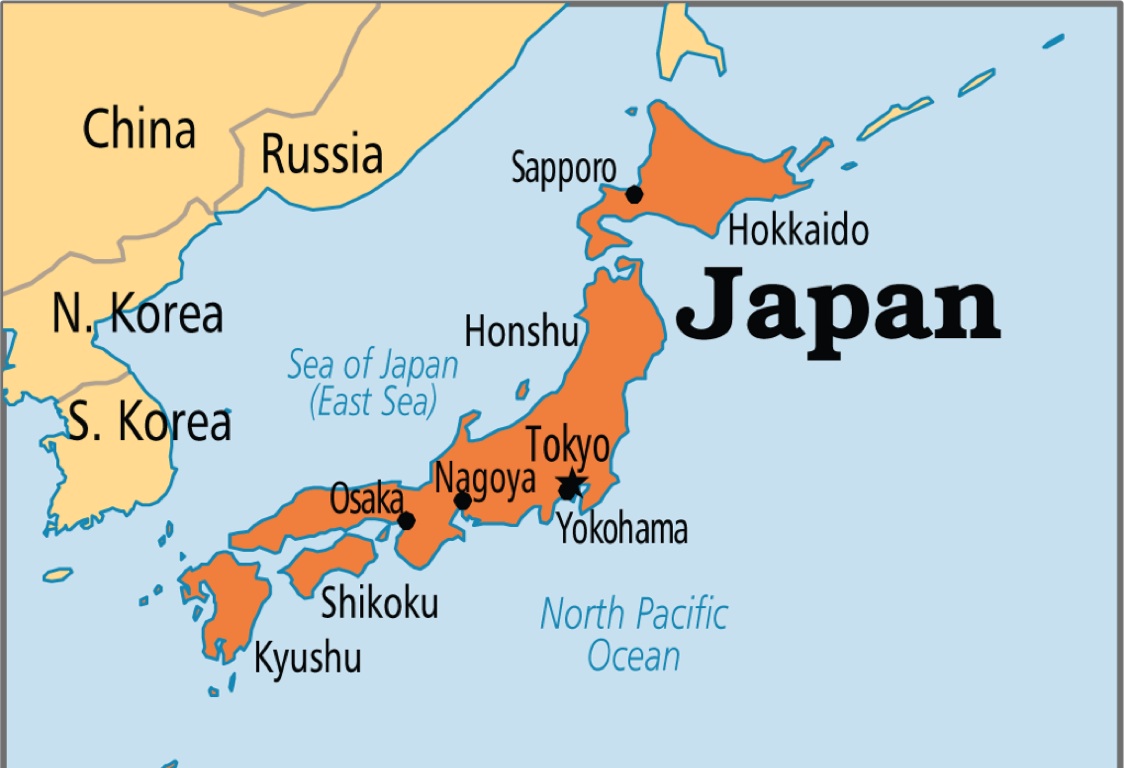
- Highlights of Recent Telephonic Conversation between the Prime Ministers of India and and Japan:
- To overcome challenges posed by the pandemic, there is a need to work together to create resilient, diversified and trustworthy supply chains, ensure reliable supply of critical materials and technologies, and develop new partnerships in manufacturing and skill development.
- Confirmed the importance of Japan-India bilateral and multilateral cooperation, including Japan-Australia-India-US quadrilateral cooperation, towards realising a free and open Indo-Pacific.
- Possible Cooperation in areas like 5G, submarine cables, strengthening of industrial competitiveness and development projects in the northeastern state.
- Other Recent Developments Between India and Japan:
- Recently, India, Japan and Australia have formally launched the Supply Chain Resilience Initiative (SCRI) in a move to counter China’s dominance of the supply chain in the Indo-Pacific region.
- Japan has finalised loans and a grant totalling around 233 billion yen for several key infrastructure projects in India, including for a project in the Andaman and Nicobar islands.
- In 2020, India and Japan signed a logistics agreement that will allow armed forces of both sides to coordinate closely in services and supplies. The agreement is known as the Acquisition and Cross-Servicing Agreement (ACSA).
- In 2014, India and Japan upgraded their relationship to 'Special Strategic and Global Partnership'.
- The India-Japan Comprehensive Economic Partnership Agreement (CEPA) that came into force in August 2011 covers trade in goods, services, movement of natural persons, investments, Intellectual Property Rights, custom procedures and other trade related issues.
- Defence Exercises:
- India and Japan defence forces organize a series of bilateral exercises namely, JIMEX (naval), SHINYUU Maitri (Air Force), and Dharma Guardian (Army). Both countries also participate in Malabar exercise (Naval Exercise) with the USA.
- Highlights of Recent Telephonic Conversation between the Prime Ministers of India and and Japan:
Way Forward
- Apart from taking assistance from Japan, India should also think about how Indian components could reach Japan, and how they can be rewarded dividends in Japan: the notion of the Aatmanirbhar Bharat also needs to be promoted.
- India needs to look into the matter of post covid ties too, ensure good relations with the other parts of the world so as to emerge from the losses and also in order to restrain Chinese influence in the areas of maritime.
- With the help of Japan, India can pave its way to the permanent membership of the UN Security Council.
Biodiversity & Environment
Pyrostria laljii: New Species from Andaman
Why in News
Recently, Pyrostria laljii, a new species which belongs to the genus of the coffee family has recently been discovered from the Andaman Islands.
- A new species of pokeweed named Rivina andamanensis was also discovered.
- Andaman and Nicobar is a group of 572 islands and islets that are rich and unique in terms of plant diversity in India.
Key Points
- About:
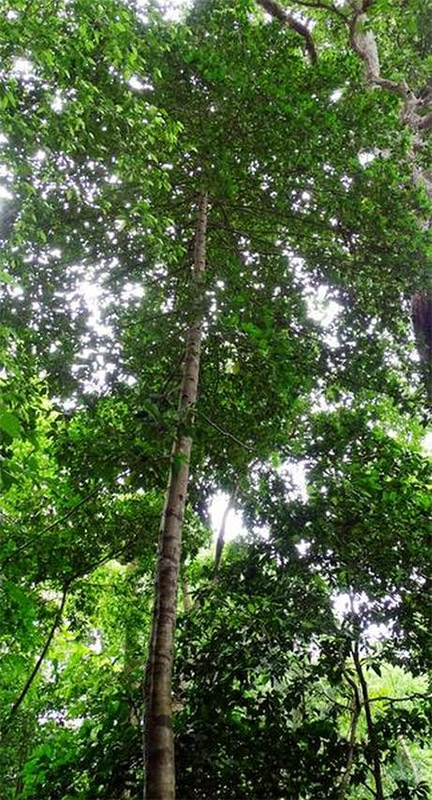
- It is the first record of the genus Pyrostria in India. It is a 15-meter-tall tree.
- Plants belonging to genus Pyrostria are usually found in Madagascar but the recently discovered species is new to science.
- While the genus Pyrostria is not found in India, there are several genera from the family Rubiaceae that are common in India.
- These plants, including cinchona, coffee, adina, hamelia, ixora, gallium, gardenia, mussaenda, rubia, morinda, have high potential for economic value.
- Named Pyrostria laljii after Lal Ji Singh, Joint Director, Andaman and Nicobar Regional Centre, Botanical Survey of India.
- It has been assessed as ‘Critically Endangered’ based on the International Union for Conservation of Nature’s (IUCN) Red List criteria.
- It is the first record of the genus Pyrostria in India. It is a 15-meter-tall tree.
- Features:
- Distinguished by a long stem with a whitish coating on the trunk, and oblong-ovate leaves with a cuneate base.
- Another physical feature that distinguishes the tree from other species of the genus is its umbellate inflorescence with eight to 12 flowers.
- Habitat in India:
- First reported from South Andaman’s Wandoor forest. Other places in the Andaman and Nicobar Islands where the tree could be located are the Tirur forest near the Jarawa Reserve Forest and the Chidiya Tapu (Munda Pahar) forest.
Rivina andamanensis
- Another new species of pokeweed named Rivina andamanensis was also discovered. It was found growing under large trees, shaded and rocky areas, along with herbs and shrubby plants.
- Pokeweed is a strong-smelling plant with a poisonous root. The berries contain a red dye used to colour wine, candies, cloth, and paper.
- This discovery of new species, representing the first record of the pokeweed family Petiveriaceae in the Andaman and Nicobar Islands, adds one more family to the islands’ flora.
Botanical Survey of India
- About:
- It is the apex research organization under the Ministry of Environment and Forests (MoEFCC) for carrying out taxonomic and floristic studies on wild plant resources of the country.
- It was established in 1890 with the objective to explore plant resources of the country and to identify plant species with economic virtues.
- It has nine regional circles situated at different regions of the country. However the headquarter is located in Kolkata, West Bengal.
- Functions:
- Exploration, inventorying and documentation of phytodiversity in general and protected areas, hotspots and fragile ecosystems in particular
- Publication of National, State and District Floras.
- Identification of threatened and red list species and species rich areas needing conservation.
- Ex-situ conservation of critically threatened species in botanical gardens.
- Survey and documentation of traditional knowledge (ethno-botany) associated with plants.
- Develop National database of Indian plants, including herbarium and live specimens, botanical paintings and illustrations, etc.
Important Facts For Prelims
Bharitalasuchus Tapani: A Carnivorous Reptile
Why in News
Recently, an international team of paleontologists has thrown light on a carnivorous reptile that lived 240 million years ago (Bharitalasuchus tapani).
- The Team studied some of the fossil specimens stored at the Indian Statistical Institute, Kolkata.
- In the mid 20th century, researchers from the Institute carried out extensive studies on rocks of the Yerrapalli Formation in what is now Telangana, uncovering several fossils.
Key Points
- About:
- This reptile belongs to a genus and species previously unknown to science. They named it Bharitalasuchus tapani (BT).
- BT were robust animals with big heads and large teeth, and these probably predated other smaller reptiles.
- They were approximately the size of an adult male lion and might have been the largest predators in their ecosystems.
- In the Telugu language, Bhari means huge, Tala means head, and Suchus is the name of the Egyptian crocodile-headed deity.
- The species is named after paleontologist Tapan Roy Chowdhury in honour of his contribution to Indian vertebrate paleontology and especially his extensive work on the Yerrapalli Formation tetrapod fauna.
- Further studies revealed that the reptile belonged to a family of extinct reptiles named Erythrosuchidae.
- Erythrosuchids are known from Lower-Middle Triassic rocks of South Africa, Russia, and China, and there have been preliminary reports from the Middle Triassic Yerrapalli Formation of south-central India.
- Yerrapalli Formation:
- It is a Triassic (period from 250-201 million years ago) rock formation consisting primarily of mudstones that outcrops in the Pranhita–Godavari Basin in southeastern India.
- Apart from this erythrosuchid reptile, the fossil assemblage of the Yerrapalli Formation includes many other extinct creatures such as ceratodontid lungfish, rhynchosaur and allokotosaurian.
- However, deforestation, mining, agricultural expansion, urbanisation are gradually destroying the fossiliferous localities of India.
Important Facts For Prelims
NATRAX-High Speed Track
Why in News
Recently, the Minister of Heavy Industries and Public Enterprises inaugurated NATRAX- the High Speed Track in Pithampur, Indore (Madhya Pradesh).
Key Points
- About:
- It is one of the state-of-the-art automotive testing and certification centre under National Automotive Testing and Research and development (R&D) Infrastructure Project (NATRIP),
- NATRIP is the largest and most significant initiative in the automotive sector which comprises representatives from the Government of India, a number of State Governments and Indian Automotive Industry.
- It is a flagship project of the Ministry of Heavy Industries.
- It aims to create a state of the art testing, validation and R&D infrastructure in the country.
- NATRIP is the largest and most significant initiative in the automotive sector which comprises representatives from the Government of India, a number of State Governments and Indian Automotive Industry.
- It is a world class 11.3 km High Speed Track. The track is the longest in Asia and the fifth-largest in the world.
- It is developed in an area of 1000 acres of land.
- It has multiple test capabilities like measurements of maximum speed, acceleration, constant speed fuel consumption, emission tests through real road driving simulation, high speed handling and stability evaluation during manoeuvres such as lane change, high speed durability testing, etc. and is a Centre of excellence for Vehicle Dynamics.
- It is one of the state-of-the-art automotive testing and certification centre under National Automotive Testing and Research and development (R&D) Infrastructure Project (NATRIP),
- Location:
- It is located only 50 km away from Indore, the financial capital of Madhya Pradesh.
- Being centrally located, it is accessible to most of the major Original Equipment Manufacturers (OEMs).
- Significance:
- Development of Prototype Cars for India:
- High Speed Track is used for measuring the maximum speed capability of high-end cars like BMW, Mercedes etc which cannot be measured on any of the Indian test tracks.
- Foreign OEMs will be looking at NATRAX High Speed Track for the development of prototype cars for Indian conditions.
- At present, foreign OEMs go to their respective high speed track abroad for high speed test requirements.
- One Stop Solution:
- It is one stop solution for all sorts of high speed performance tests, being one of the largest in the world.
- It can cater to the widest category of vehicles; say from two wheelers to the heaviest tractor trailers.
- Development of Prototype Cars for India:

